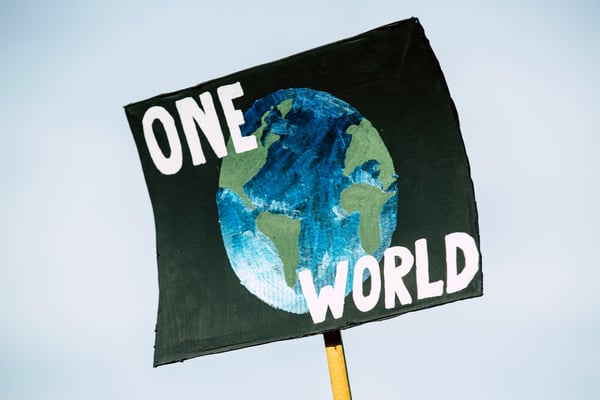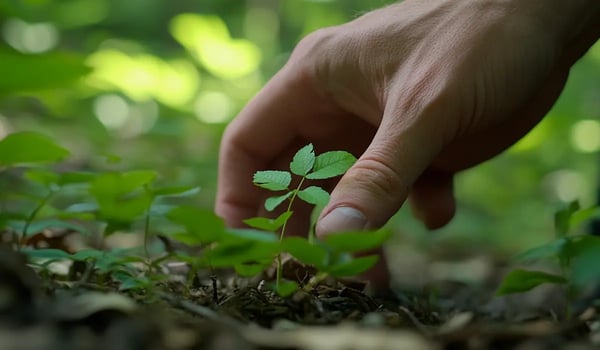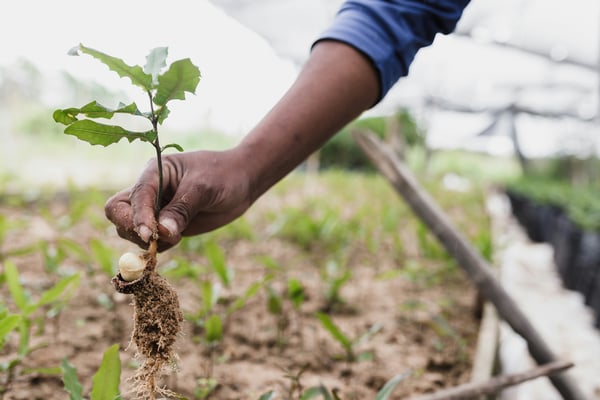Curbing global warming in line with the Paris Agreement will require removing 16 billion tonnes of...
Earning Carbon Credits: The Impact of Second-Hand Fashion
Imagine striding through the aisles of your favorite thrift store, a vintage jacket in hand, and realizing that your passion for sustainable fashion could actually earn you carbon credits. This innovative idea exemplifies the intersection of consumer behavior, environmental responsibility, and green finance. As the world increasingly turns its focus toward sustainability, the concept of carbon credits, particularly in the context of second-hand shopping, is gaining traction.
The Rise of Carbon Credits in Sustainable Fashion
The climate crisis demands that individuals and industries take action, and the emergence of carbon credits offers a tangible way for consumers to contribute positively. A carbon credit represents a permit allowing the holder to emit one ton of carbon dioxide or the equivalent in other greenhouse gases. In turn, businesses and individuals can purchase these credits to offset their own emissions.
This market mechanism incentivizes carbon reduction and promotes environmentally friendly practices. The innovative proposal that turns second-hand clothing purchases into carbon credit opportunities is not just an idea; it’s becoming a reality. According to a report by the *Australian Financial Review*, this initiative may be one of the first to acknowledge the positive environmental impact of buying second-hand clothes, thereby rewarding eco-conscious consumerism. It's a fascinating development in the world of carbon credits that combines consumerism with a deeper commitment to sustainability.
Understanding the Link Between Second-Hand Fashion and Biodiversity
The fashion industry is notorious for its environmental impact, contributing significantly to carbon emissions, waste, and the depletion of natural resources. By encouraging people to shop second-hand, we effectively reduce the demand for fast fashion, which often leads to deforestation, water pollution, and biodiversity loss.
This shift goes beyond simply reducing carbon footprints; it helps preserve ecosystems that are vital for a healthy planet. Through this private carbon credit scheme, thrift shops can engage a wider audience, making sustainability more accessible. Imagine being rewarded for making eco-friendly choices — each purchase of second-hand clothing could translate into carbon credits, not only generating revenue for thrift stores but also inspiring more consumers to consider the environmental implications of their purchases.
The Benefits of Carbon Credit Programs
Implementing carbon credit programs offers numerous benefits for both consumers and the environment.
1. Encouraging Sustainable Consumer Choices
When consumers realize they can earn carbon credits through thrift shopping, it elevates the appeal of buying second-hand. This paradigm shift encourages more sustainable choices, as shoppers become aware of the tangible rewards tied to their actions.
2. Supporting Local Economies
Thrift shops are often community-driven businesses. By channeling funds back into local economies through increased sales and carbon credit revenues, we can foster a sense of community and support for local initiatives focused on sustainability.
3. Enhancing Awareness of Climate Change
Carbon credit programs educate consumers about the broader implications of their purchasing decisions. As individuals engage with carbon markets, they become more informed about climate change, biodiversity, and sustainable development, ultimately fostering a culture of environmental stewardship.
Challenges and Considerations
While the concept of earning carbon credits through thrift purchases is undoubtedly exciting, several challenges must be addressed before widespread implementation.
1. Verification and Transparency
One of the most significant hurdles in the carbon credit market is ensuring the credibility of carbon credits. For thrift shops to earn credits legitimately, a robust verification system must be established to measure the actual carbon savings achieved. This would require clear guidelines and protocols that monitor purchases and track emissions reductions accurately.
2. Avoiding Greenwashing
The risk of companies using the initiative as a marketing tool without genuine commitment to sustainability looms large. It is crucial to create transparent frameworks that prevent greenwashing and ensure companies are genuinely contributing to carbon reduction.
Moving Forward with Sustainable Practices
As we look towards a more sustainable future, blending consumer behavior with environmental responsibility offers promising avenues. By legitimizing the purchase of second-hand clothing as a means to earn carbon credits, we can make significant strides in educating consumers while also promoting biodiversity and reducing carbon footprints.
In conclusion, the melding of thrift shopping and carbon credits signals a new era in sustainable consumerism. It’s a chance for us all to play a part in the fight against climate change while promoting both economic benefits and environmental justice. So next time you pick up that cool jacket, remember - you might just be earning more than your style points; you could be contributing to the future of our planet.

CarbonUnits.com
This website serves as the premier destination for insightful, up-to-the-minute news and analysis on carbon and biodiversity markets. Catering to investors, policymakers, environmentalists, and anyone keen on understanding the evolving landscape of green finance, our platform demystifies the complex interplay between carbon credits, conservation efforts, and financial instruments.- The End of Cheap Offsets? Why Top-Tier Carbon Credits Now Command an 87% Premium
- 2026 Australian Carbon Market Outlook: Will Regulatory Shifts Push Prices Higher?
- From Speculation to Stability: Why High-Integrity Removals are 2025’s Biggest Success Story
- When Integrity Matters Most: The Voluntary Carbon Market in Review





